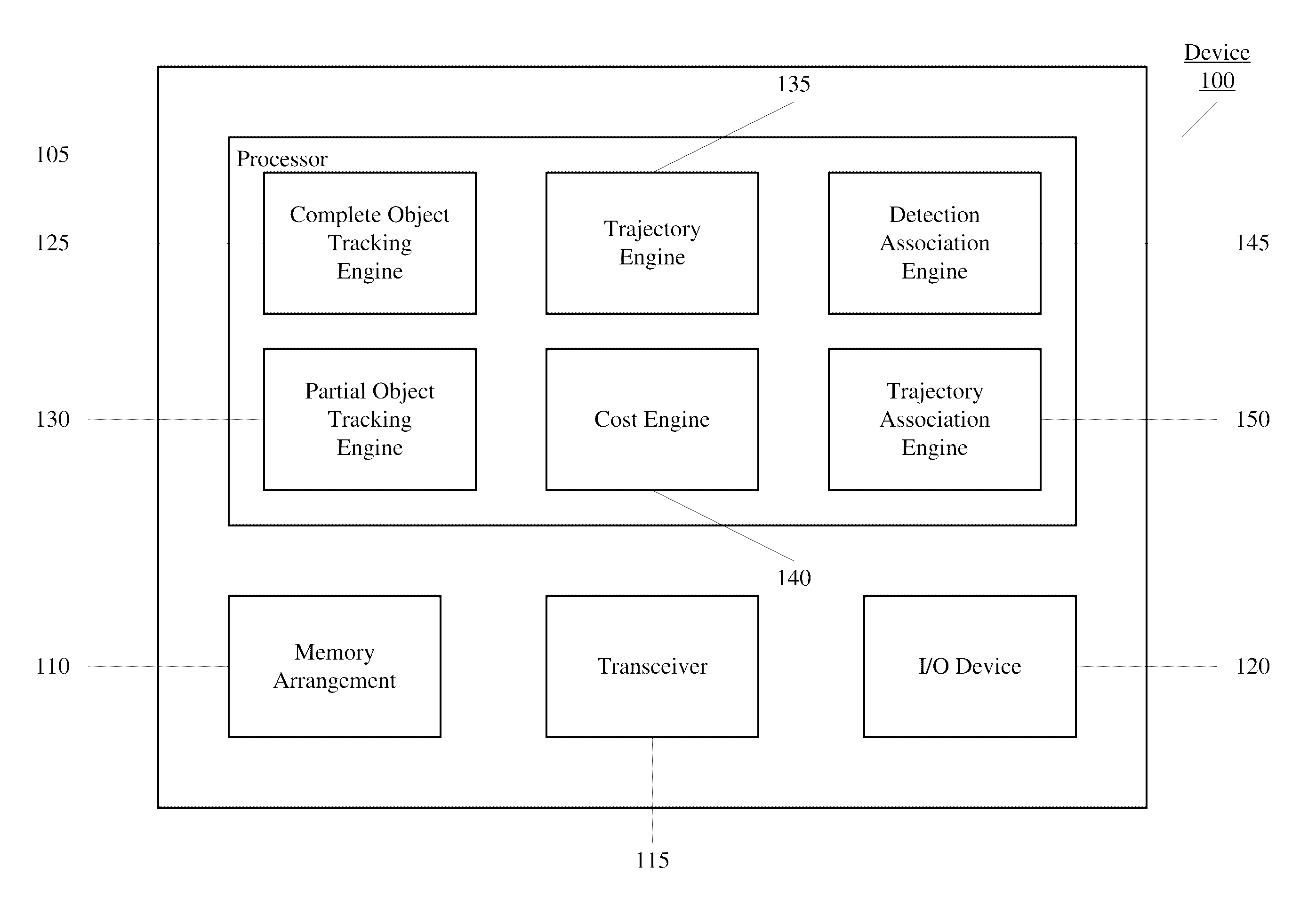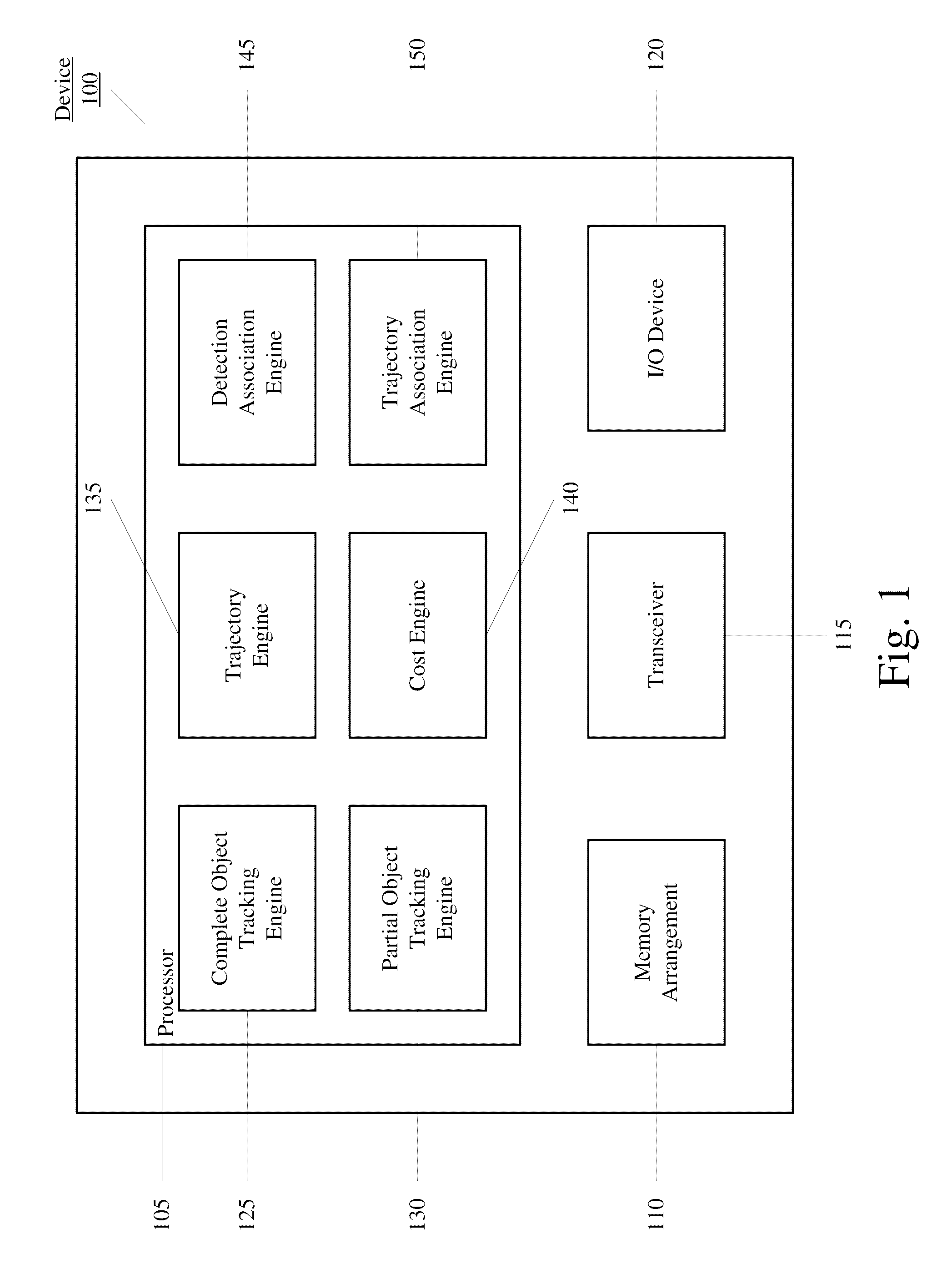Method and device for multi-target tracking by coupling multiple detection sources
- Summary
- Abstract
- Description
- Claims
- Application Information
AI Technical Summary
Benefits of technology
Problems solved by technology
Method used
Image
Examples
Embodiment Construction
[0041]The present disclosure relates to a device and method for receiving first detection information for a plurality of objects, the first detection information relating to a first characteristic of the objects, receiving second detection information for the objects, the second detection information relating to a second characteristic of the objects, determining first detections based upon the first detection information and second detections based upon the second detection information, formulating a first trellis graph for the first detections and a second trellis graph for the second detections, the first and second trellis graphs including corresponding first and second nodes at a plurality of time frames and determining a tracking of a selected one of the objects based upon a simultaneous shortest path for the selected object through both the first and second trellis graphs based upon a first path through the first trellis graph, a second path through the second trellis graph, ...
PUM
 Login to View More
Login to View More Abstract
Description
Claims
Application Information
 Login to View More
Login to View More - R&D
- Intellectual Property
- Life Sciences
- Materials
- Tech Scout
- Unparalleled Data Quality
- Higher Quality Content
- 60% Fewer Hallucinations
Browse by: Latest US Patents, China's latest patents, Technical Efficacy Thesaurus, Application Domain, Technology Topic, Popular Technical Reports.
© 2025 PatSnap. All rights reserved.Legal|Privacy policy|Modern Slavery Act Transparency Statement|Sitemap|About US| Contact US: help@patsnap.com



